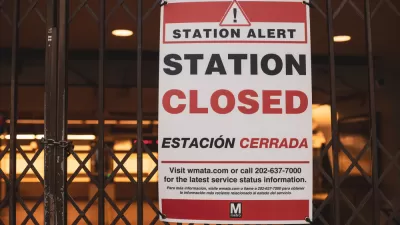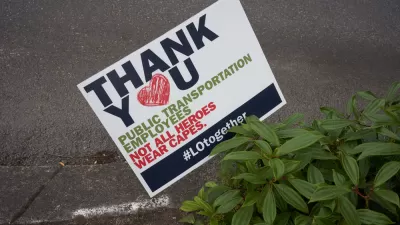Transit routes used by workers in Toronto heading to industrial jobs have still been crowded with riders during the coronavirus pandemic.

Ben Spurr reports from Toronto, where the Toronto Transit Commission (TTC) is providing commuting service for essential workers through the pandemic, leading advocates to call for better service on crowded routes.
Local blogger and transit advocate Sean Marshall mapped the busy TTC routes in the city, where riders are still relying on service despite a reported 80 percent dip in ridership, locating the busiest routes in industrial areas populated by a high concentration of warehouses, food processing plants, light industrial facilities, and industrial bakeries. The jobs tend to pay low wages relative to other sectors of Toronto's economy, according to the article.
As a response to the current state of transit ridership in the city, the TTC announced on April 1 that it would add "at least 47 buses to 15 of its crowded bus routes during busy morning periods," reports Spurr. "The agency said it would monitor crowding, and the routes receiving extra service would change as needed."
FULL STORY: Who’s still crowding into TTC buses amid the pandemic? Evidence suggests many are Toronto’s working poor

Alabama: Trump Terminates Settlements for Black Communities Harmed By Raw Sewage
Trump deemed the landmark civil rights agreement “illegal DEI and environmental justice policy.”

Study: Maui’s Plan to Convert Vacation Rentals to Long-Term Housing Could Cause Nearly $1 Billion Economic Loss
The plan would reduce visitor accommodation by 25% resulting in 1,900 jobs lost.

Why Should We Subsidize Public Transportation?
Many public transit agencies face financial stress due to rising costs, declining fare revenue, and declining subsidies. Transit advocates must provide a strong business case for increasing public transit funding.

Paris Bike Boom Leads to Steep Drop in Air Pollution
The French city’s air quality has improved dramatically in the past 20 years, coinciding with a growth in cycling.

Why Housing Costs More to Build in California Than in Texas
Hard costs like labor and materials combined with ‘soft’ costs such as permitting make building in the San Francisco Bay Area almost three times as costly as in Texas cities.

San Diego County Sees a Rise in Urban Coyotes
San Diego County experiences a rise in urban coyotes, as sightings become prevalent throughout its urban neighbourhoods and surrounding areas.
Urban Design for Planners 1: Software Tools
This six-course series explores essential urban design concepts using open source software and equips planners with the tools they need to participate fully in the urban design process.
Planning for Universal Design
Learn the tools for implementing Universal Design in planning regulations.
Smith Gee Studio
Alamo Area Metropolitan Planning Organization
City of Santa Clarita
Institute for Housing and Urban Development Studies (IHS)
City of Grandview
Harvard GSD Executive Education
Toledo-Lucas County Plan Commissions
Salt Lake City
NYU Wagner Graduate School of Public Service





























